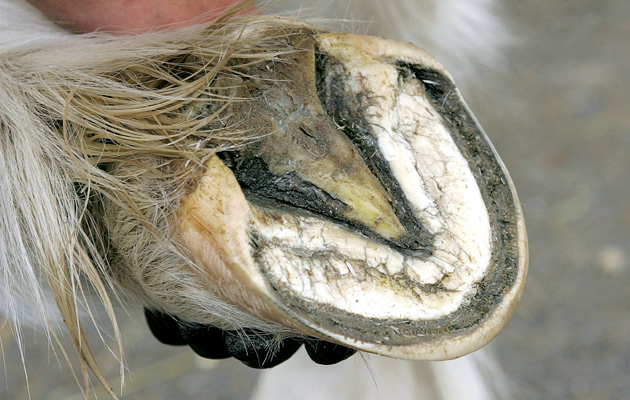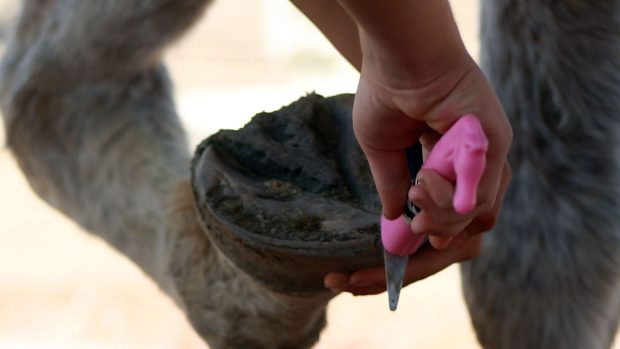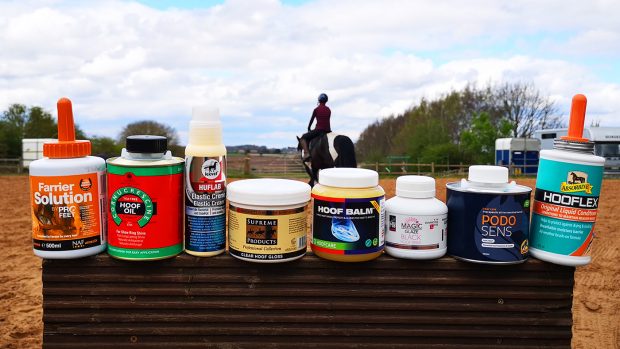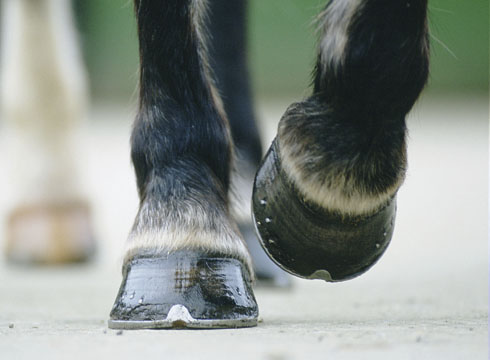Some horses seem to have a bigger shoe habit than Imelda Marcos.
When you are paying upwards of £60 every four to six weeks, it can be desperately frustrating if your horse has chipped, cracked or thin feet that don’t hold on to a shoe for any length of time.
Scientific studies in different countries have shown incidence of poor hoof quality in 30-40% of the horses studied. Nutrition is one important factor in hoof quality – in unison with several others including farriery, genetics, conformation, management and environmental conditions.
Hoof growth is relatively slow, at around 0.2mm a day, meaning that the horn takes 9-12 months to grow from the coronary band to the weight-bearing surface. Adverse changes therefore take a while to correct.
You only have to look closely at a hoof to see that it is highly complex in structure. Hoof wall thickness and strength are created by layers of linked cells. The strength of the hoof depends on the ability of such layers to hold together.
Nutrition for the hooves must concentrate on the hoof cells and the lipid “glue” that holds the wall together. Given their complexity, no single nutrient can fulfil all roles.
First and foremost the requirement is for a balanced diet – one containing appropriate amounts of all nutrients, from energy and protein down to the smallest micronutrient.
The B-vitamin biotin, was the first micronutrient identified as a benefit for the production of hoof horn. However subsequent research reveals that biotin alone will improve only 6% of cases with deficient horn quality. Subsequent research identifies that a diet balanced in macronutrients and containing more than 60 specific micronutrients is essential to optimise the horn growth rate and quality in horses.
High-grain, low-forage diets may not support hoof growth. Not only may B-vitamin production be low, but low calcium availability may also result in weakness – calcium is reported as having a direct effect on the attachment of layers of hoof horn.
It is easy to understand why grass fed horses may have nutritional hoof problems, as grass is generally very rich in carbohydrates but usually very poor in essential nutrients.
Changing conditions such as wet and dry weather and uneven ground certainly have an impact on the physical qualities of hoof horn i.e. it tends to dry out and crack in hot dry conditions and become waterlogged and weak during the wet periods. Unless your horse has been receiving the correct lipids in its diet which can be incorporated into the hoof matrix it is likely to suffer from cracked hooves, collapsed heels, horn infections and frequent shoe loss.
Tips to keep your horse’s hooves healthy
- Undertake good equine husbandry when caring for your horse’s feet on a daily basis
- Ensure your horse receives expert care on a frequent basis from a competent qualified farrier
- If your horse has poor feet, take into account the nutrient supply from forage and hard feed, and look for gaps, most likely in vitamin, mineral and trace element supply
- Feed a supplement known to supply the essential micronutrients, combined with an alfalfa-based low cereal diet
First published H&H (3 June 2004). Last updated 16 February 2015




